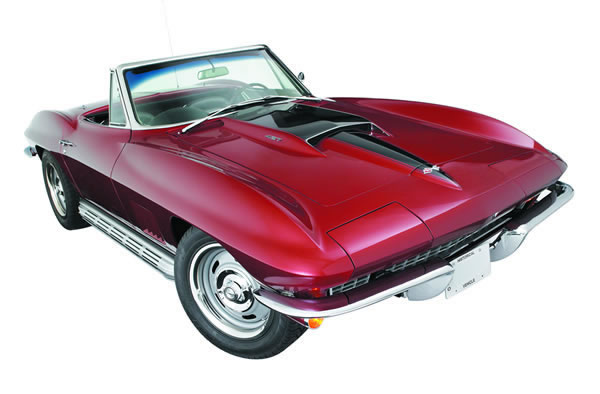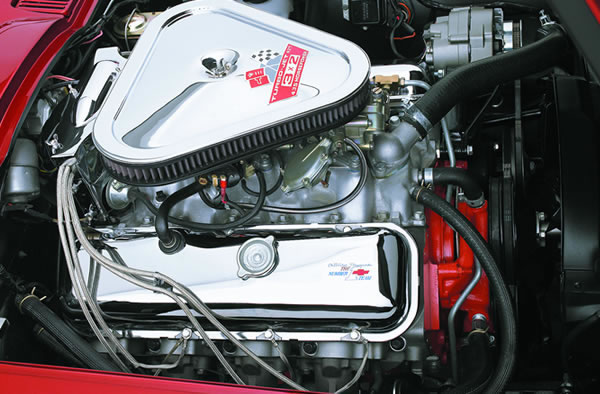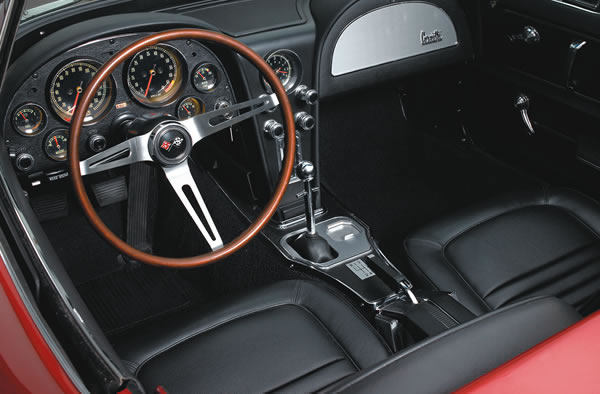The second-generation Corvette has had a huge impact on the world of hot rodding.
The 1963 Sting Ray brought independent rear suspension into the mix. The 1965 model year introduced big block power into the Corvette equation and helped bring four-wheel disc brakes to America. Then there’s the 1967 Corvette—the second generation Vette that was never supposed to happen. General Motors intended to introduce the third generation Corvette in the 1967 model year, but production delays forced General Motors to put off its debut until 1968. Instead, GM made a few changes to the 1967 model to set it apart from its second generation brethren, including the popular 427 cubic inch/435 horsepower Tri-Power engine option.
Ironically, the 1967 Corvette is now one of the most sought-after Corvettes of all-time, and this Marlboro Maroon 1967 Tri-Power Corvette in particular would help change the high performance aftermarket forever. It was purchased brand new by a hot rodder in 1967. Frustrated by the lack of hop-up parts available near his Northeast Ohio home, he decided to fill a need and sell parts on his own—first to friends and then to the general public starting in 1968.
Summit Racing Equipment was born.
Today, that Corvette started it all is alive and well—albeit in slightly modified form. The car was pulled out of storage after a long hibernation and completely rebuilt to celebrate Summit Racing’s 40th anniversary in 2008. Corvette enthusiasts Bill McGhee and Wayne Krinjeck, employees who have been with Summit Racing for many of its 40 years, painstakingly refreshed or replaced every nut, bolt, and rivet on the car. Bill and Wayne gel-coated and block-sanded the car by hand until its original lines were back in perfect form. The car then received a fresh coat of its original color, PPG Marlboro Maroon.
The original 427 cubic inch Tri-Power big block purrs with the help of some performance goodies that up the horsepower ante. The Quick Fuel-modified Holley carbs, Trick Flow PowerPort® 280 cylinder heads (ported and milled by the experts at Trick Flow), JE pistons, COMP Cams hydraulic roller cam, and Scat crank bring the 427 into the 21st century with a total 496 cubic inches of displacement. It throws about 592 horsepower to the Muncie M-22 four-speed, which is equipped with a Lakewood bellhousing, Centerforce clutch and pressure plate, and Hurst linkage. To make the most of the power gains, the two inch factory sidepipes were replaced with a set of three inch pipes with head-turning sound.
Over 50 years after the last second generation Corvette came off the assembly line, Summit Racing continues to change the way we hop up our rides—and this 1967 Tri-Power Corvette started it all!





Great article, Love those Corvette’s
Absolutely beautiful car,, U just can’t beat C-2 Corvette,, and that color looks so goooooood on them, U guys are so great to deal with,,, always good service,,, thanks,,
Great job. My first introduction to a Stingray was a 67 British Racing Green coupe. The best of the best! Congratulations. I’ve purchased many “go fast” parts from your great company.
I believe the first Summit Racing was on State Road Shopping center.
What a tremendous Success story Summit Racing is! I was most fortunate to spend 4 years there in the retail store. This isn’t a four star organization, NO, it is a TEN star organization!! And the Vette is to die for!